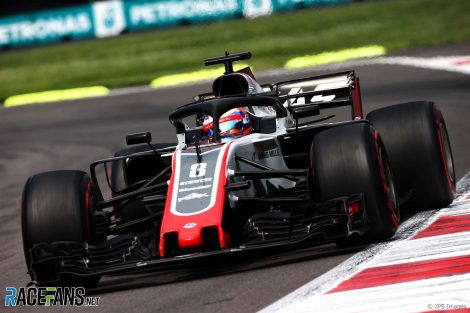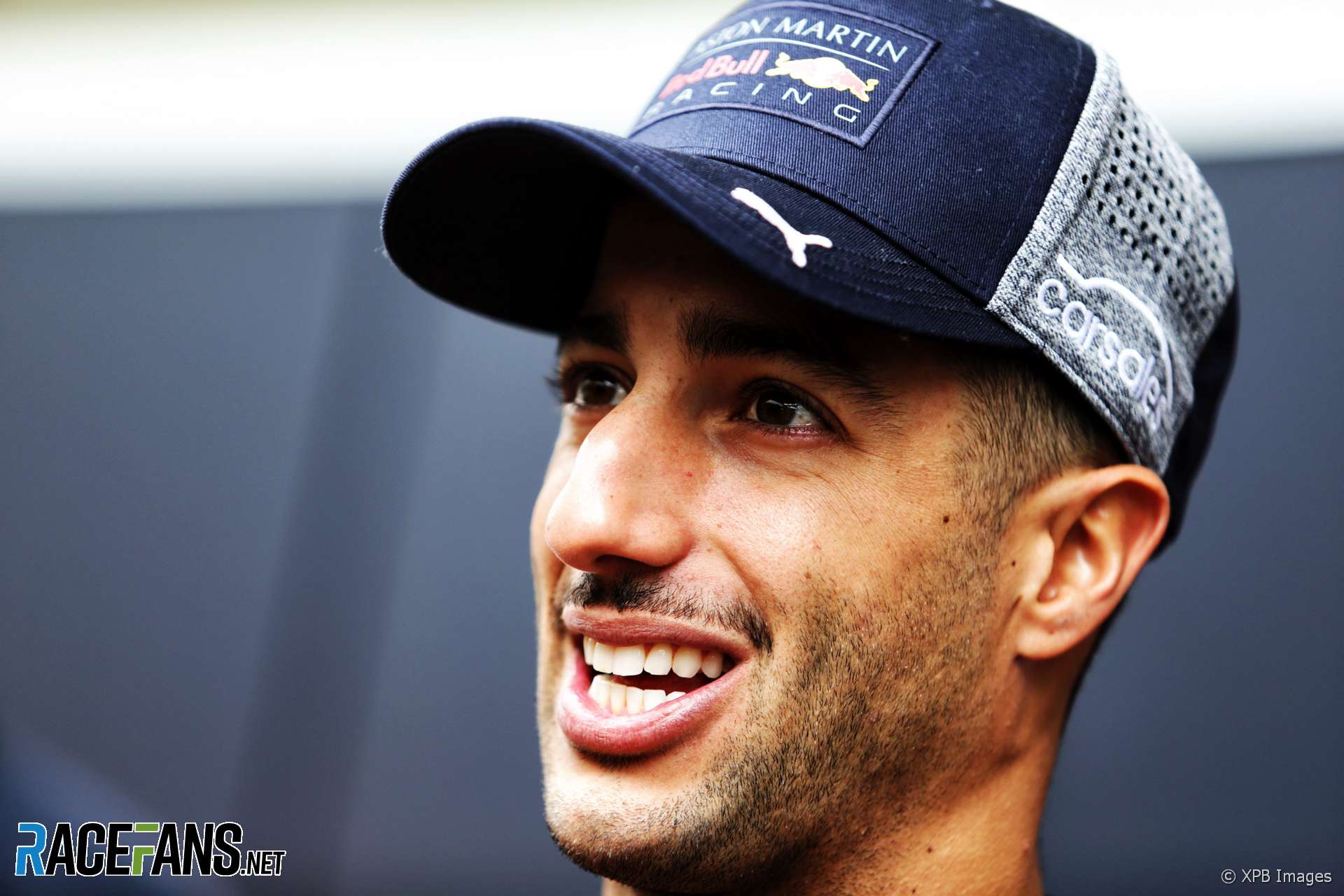Concerns about Formula 1’s high degradation tyres will be raised at a meeting of the Grand Prix Drivers’ Association tomorrow.
Drivers are unhappy about how much they have to slow down in races to run optimal strategies on the tyres, and the difficulties they experience running close to other cars because of high degradation rates.“It’s been a topic all year,” said Pierre Gasly. “There are many things we can improve but clearly one aspect that could improve racing [is] if we had more robust tyres, less sensitive to overheating. That will give us the opportunity to follow other cars for longer.
“At the moment you do three corners really close from another car, you start sliding. Three degrees of temperature on the tyres and basically you really start to lose performance. It’s a snowball effect, the temperatures keep increasing and then after you are done.”
Several drivers complained during the Mexican Grand Prix about how much they had to slow down to preserve their tyres in order to complete the race with a single pit stop, which was the most advantageous strategy. Charles Leclerc had 50 instructions to slow down from the Sauber pit wall and Nico Hulkenberg described F1 as the “world championships in driving slow”.
F1’s official tyre supplier Pirelli produces its rubber in line with a ‘target letter’ which establishes how much they should degrade by. However Gasly says drivers’ concerns must be addressed,
“It’s something Pirelli should focus on. We told them already. [But] they need to respect also what FOM asked them. So I think it’s a topic we discuss many times. Probably us drivers should be stronger in our opinion and view and desire of what we need for the future.”
Daniel Ricciardo confirmed the subject of tyres will be discussed at tomorrow’s GPDA meeting. He said current degradation levels are not as high as they were in the past.
Advert | Become a RaceFans supporter and
“A few years ago the deg was massive, especially when Pirelli first started and it was like we need to be able to push on something, a harder compound or whatever.”

“I don’t think anyone ever seems to be satisfied,” he said. “They wanted a tyre we can race harder on for longer. I feel now we’re nearly getting that.
“I don’t know how to have a tyre that we can push hard on that is going to degrade so we can still do a two or three stop, I feel we’re just going to drive slower like we’re doing now.
“If we push hard on this tyre from the start we’ll probably do a two-stop instead of a one but people will kind of see that cruising on a one-stop is going to be quicker so we’re kind of just doing what’s better for strategy.”
Whatever comes out of the meeting is unlikely to affect next year’s tyres as the designs have already been finalised and will be tested by teams at Yas Marina at the end of the month.
“I think in the short-term there is not much we can do because in terms of development everything is fixed for next year,” said Gasly.
“More in the longer-term, 2021 the rules will change probably big time and that’s something we should look at as well to really as drivers explain what we need to improve the racing because at the moment the tyres are infecting the overtaking and the show. It’s not the only thing we need to improve but it’s part of it and I think it could be better.”
Advert | Become a RaceFans supporter and
2018 F1 season
- McLaren staff told us we were “totally crazy” to take Honda engines in 2018 – Tost
- ‘It doesn’t matter if we start last’: How Red Bull’s junior team aided Honda’s leap forward
- Honda’s jet division helped F1 engineers solve power unit problem
- McLaren Racing losses rise after Honda split
- Ricciardo: Baku “s***show” was Red Bull’s fault





Euro Brun (@eurobrun)
8th November 2018, 19:45
Bring back 6 wheelers.
More tyres, less wear per tyre, less degradation.
And more interesting pit stops!
socksolid (@socksolid)
8th November 2018, 20:12
I think just making harder tires won’t fix anything. The optimal race strategy is always as few stops as possible because every time you pit your pitstop may go wrong or you may end up in traffic. With harder tires it becomes really predictable really quickly. I think little bit of chaos is the best option. Some races should have more stops because of graining or too soft tires while some others should have much harder rubber. And in extreme cases some races should have 4 pitstops while some others should be easy peasy for the 1 stopper on the softest tire available in that race. Regardless of all that the tires should be less sensitive to overheating.
The teams have the sensors and telemetry teams to log and analyze everything and always get the best result or very close to it. If you limit the size of their telemetry team and make the tires more unpredictable so that every weekend is different then you are more likely to see more variation during the season and during individual races.
Considering how big the difference between division 1 and division 2 is I’d be willing to make it more random and unpredictable than ideally. That might lead to situations where the 2 second difference between division 1 and the rest becomes 5 seconds but sometimes even if it is couple of times during the season we might see division 2 car being there in the fight for podium or even win if really lucky.
In that kind of system pirelli would bring 20 different tires sets to 20 races. Each with their own 3 compounds. It would be even better if fia limited the telemetry teams so big teams can not spend big sums of money on something that in reality only hurts the quality of racing in f1 even if it does help themselves a lot. We have limitations for cfd time and wind tunnel time. Why not expand it further. With less money and people the quality of the people and their work becomes more important.
F1 Codger
8th November 2018, 21:07
Four stops sounds very messy unless it is raining fit to bust. How about making the tyres very durable and only the top 10 qualifiers having to do a compulsory tyre change, those outside the top ten can then do a NO STOPPER and go to the finish on only one set of tyres. Would it then be tactically appropriate for a top team to go-slow in qualifying in order to be classified 11 or lower in order to do the race without stopping (e.g. at Monaco, Singapore ?) would we then see Stroll regularly on the front row of the grid?
It is a silly idea but it would introduce some variety of tactics down the field.
Driomed
8th November 2018, 20:46
Mandate using three different tyres per race and make two of the compounds harder. Even if the hard can do thirty laps, if you only need it for 15 laps you can race harder.
Make races a minimum of two stops. At some circuits the quickest race could be a three stopper. If two of the compounds are harder, there should be less of an issue following other cars trying to overtake. You could also start and end the race on the softest tyre to try to catch the two stoppers or benefit from a late safety car.
RogerA
8th November 2018, 21:09
I have never got the fascination with having 2-3+ stops as i’ve just never found watching cars trundling down the pit down, Stationary for a few seconds with the under or overcut to be all that interesting to watch.
I’m here to see cars on track, I’m here to see racing & overtaking been done on the track & not in the pits.
Maybe it’s just because younger/newer fans became so used to see pit stops with refueling that they now feel that there has to be pit stops because this is what they are used to seeing?
In the past the only time a car came into the pits is if it had a problem or if the weather had changed & even when pit stops became more common in the 1980s it was still not uncommon to see drivers run non-stop which was something that only went away because of refueling.
i am very tired now of having to spend so much time with the focus on tyres and pit stops, it is detracting from the racing and detracting from watching cars pushing and racing on the track on the track.
They need to stop playing around with gimmicks and artificial silliness and just leave the racing for the racetrack rather than pits, if people do not wish or need to make a stop them why force them, especially since doing so creates far more negative aspects and does not really do anything to improve the racing in any way.
@HoHum (@hohum)
8th November 2018, 22:03
@rogera, Absolutely right. Before you know it someone will post ” Pit-stops are in the DNA of F1″. Ever wondered why major wars happen about a generation apart ?
grat
8th November 2018, 21:44
The slower the pitlane gets, the longer the pit delta, the less likely a team is to stop. When you can lose 2 seconds a lap for 10 laps, and still be ahead of where you would be with a pitstop, then there’s no incentive to pit.
If you really want multiple pitstops (and the first question is, does F1 want that, and why?), then bring back refueling, and give the teams at least one more set of tires.
It’s really sad for to hear drivers of the so-called pinnacle of motor racing being told they can’t pit for new tires because there aren’t any…..
@HoHum (@hohum)
8th November 2018, 21:54
Conversation: “Why is there so much broken chinaware in the shop”?
“I don’t know”
“Do you think it might have something to do with that elephant”?
“Maybe, but we have had some breakages before the elephant started shopping here”.
Silfen (@silfen)
8th November 2018, 22:48
Overheating the tyres ruins them without coming back.
Pirelli should deliver linear degrading tyres, who, when pushed too much should not fall off a cliff, but become less and less grippy. Not at once.
May be even gerting some grip back after a cooling down period, which is impossible with the current tyres.
@HoHum (@hohum)
9th November 2018, 1:03
Or they could just build good tyres so racers can race.
Todfod (@todfod)
9th November 2018, 7:16
Agree with Dan on this one. I thought they’re pretty close to getting a perfect balance between the degradation and performance advantage. If they make the tyres even more robust, we’ll get racing like how we got in 2010, where there wasn’t much degradation and there was little to no scope for tyre strategies.
The only problem right now is the rate of degradation and overheating of tyres when following another driver. If they can marginally improve the performance in those two areas, there’s absolutely no reason to complain.